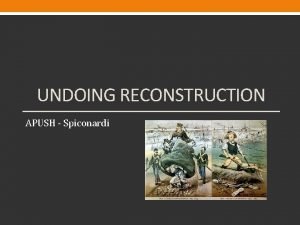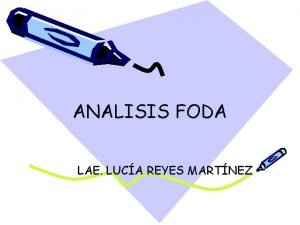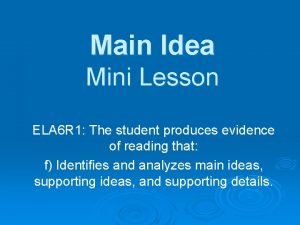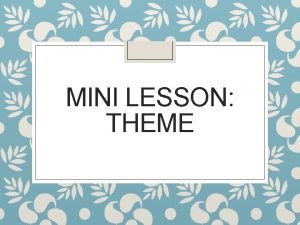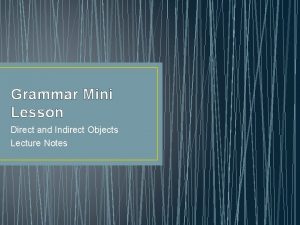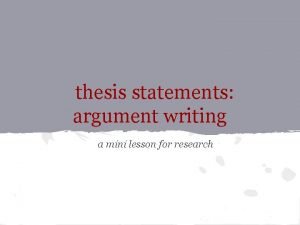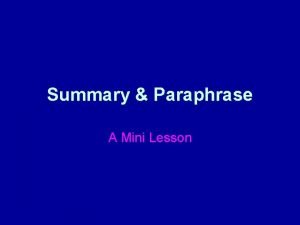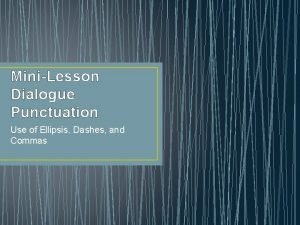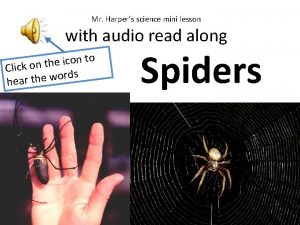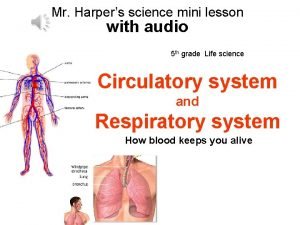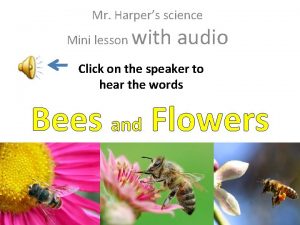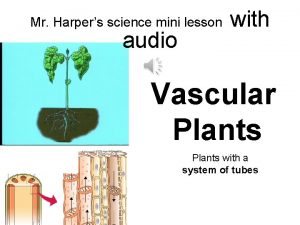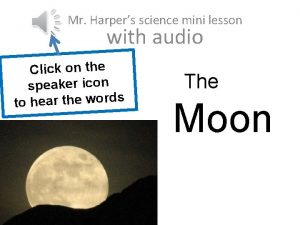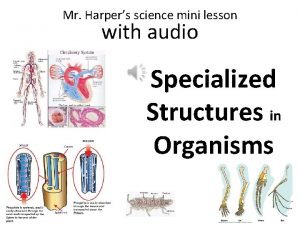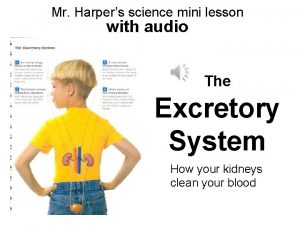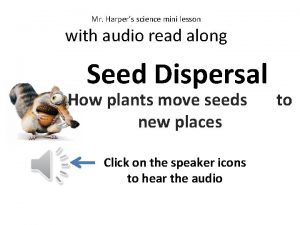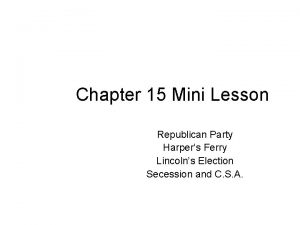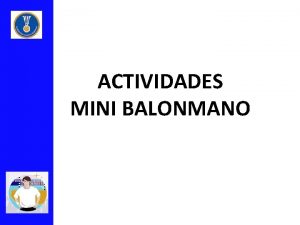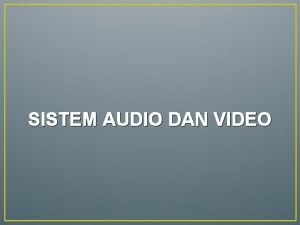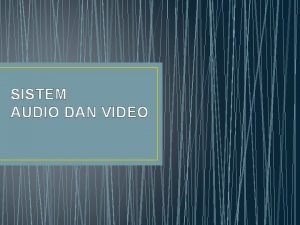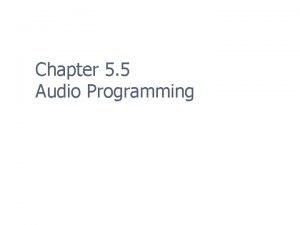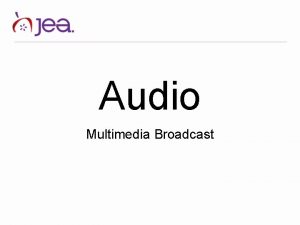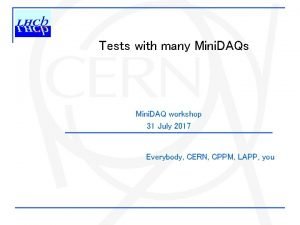Mr Harpers science mini lesson with audio The


































- Slides: 34

Mr. Harper’s science mini lesson with audio The Digestive System What happens to the food we eat

Every part of our bodies is made up of billions of tiny living cells. Every cell needs food for energy or it will die.

Cells get the energy they need from sugar that comes to them the blood. in lothe Blood. Bin odfcapillary low in capilla ry Sugar molecules cell cell

The digestive system is a group of organs that process the food we eat and puts sugar into the blood that cells need for energy to live. stomach Small intestine where sugar is put into the blood the

The digestive process begins in the mouth. Food is broken into small pieces by the teeth and mixed with saliva (spit) which has chemicals that help with digestion.

Food is chewed up and mixed with saliva in the mouth. When we swallow, it moves down a tube called the esophagus. ee SOF uh gus

The esophagus delivers the food to the stomach, which is a storage bag. Here food is mixed with chemicals, acids and juices that help with digestion.

After it leaves the stomach the food material is very watery, like soup. It moves into the long, folded small intestine. Here is where the sugar and other nutrients are taken out of the food. stomach small intestine

The inside of the small intestine is lined with millions of tiny, finger-like projections called villi (vil eye). Villi absorb nutrients from our food. Villi is the plural for villus. 1 villus villi 2

After the nutrients have been removed in the small intestine, the watery material moves into the large intestine, also called the colon. Stomach Small intestine Large intestine The large intestine is shorter but bigger around than the small intestine.

Most of the water is removed from the used-up food material in a healthy person’s large intestine. After that the solid waste (poop) goes into the toilet.

After it leaves the mouth, food passes through the digestive organs in this order:

Let’s review: After it leaves the mouth the order of the organs that food passes through is 1. Esophagus

Let’s review: After it leaves the mouth the order of the organs that food passes through is 1. Esophagus 2. Stomach

Let’s review: After it leaves the mouth the order of the organs that food passes through is 1. Esophagus 2. Stomach 3. Small intestine

Let’s review: After it leaves the mouth the order of the organs that food passes through is 1. Esophagus 2. Stomach 3. Small intestine 4. Large intestine also called the colon

Now let’s check what you learned.

Review question 1 What is the main function (job) of your digestive system?

Review question 1 The job of our digestive system is get the sugar and nutrients our cells need to live from the food we eat. Short answer: The digestive system processes the food we eat.

Review question 2 What is the function of the esophagus?

Review question 2 food The esophagus is a tube that transports food from the mouth to the stomach.

Review question 3 What is the job of the stomach?

Review question 3 The stomach is only a storage bag where food is mixed with acids to get it ready for digestion.

Review question 4 What happens in the small intestine?

Review question 4 The small intestine is where food is digested (sugar and other nutrients are removed from food and put into the blood).

Review question 5 What happens to food material when it moves out of the small intestine?

Review question 5 Food material is like a stinky brown soup when it leaves the small intestine. It goes next through the large intestine where most of the water is removed.

Review question 6 Where does the digestive process begin?

Review question 6 The digestive process begins in your mouth where food is broken up and mixed with saliva.

Review question 7 What is the correct order of the digestive system organs that food passes through after it is swallowed?

Review question 7 1. Esophagus 1 2. Stomach 3. Small intestine 4. Large intestine (also called the colon) 2 3 4 Large intestine

Review question 8 How does sugar travel from the small intestine to all the cells in your body?

Review question 8 The blood carries sugar from the small intestine to every cell in your body. lothe Blood. Bin odfcapillary low in capilla ry Sugar molecules cell cell

There is a good Brainpop cartoon that can teach you more: • Digestive system
 John browns raid apush
John browns raid apush F&sf submission grinder
F&sf submission grinder Harpers ferry apush definition
Harpers ferry apush definition Estrategias maxi maxi
Estrategias maxi maxi Estrategia da mini-mini ejemplo
Estrategia da mini-mini ejemplo Foda siglas
Foda siglas My favorite subject is arabic
My favorite subject is arabic Lesson outline lesson 1: understanding science answer key
Lesson outline lesson 1: understanding science answer key Main idea mini lesson
Main idea mini lesson What is the conflict in frankenstein
What is the conflict in frankenstein Theme mini lesson
Theme mini lesson Direct object mini lesson
Direct object mini lesson Summarizing mini lesson
Summarizing mini lesson Mini lesson on thesis statements
Mini lesson on thesis statements Magnifying glass clipart
Magnifying glass clipart Dialogue mini lesson
Dialogue mini lesson Hình ảnh bộ gõ cơ thể búng tay
Hình ảnh bộ gõ cơ thể búng tay Slidetodoc
Slidetodoc Bổ thể
Bổ thể Tỉ lệ cơ thể trẻ em
Tỉ lệ cơ thể trẻ em Chó sói
Chó sói Tư thế worms-breton
Tư thế worms-breton Hát lên người ơi
Hát lên người ơi Môn thể thao bắt đầu bằng từ đua
Môn thể thao bắt đầu bằng từ đua Thế nào là hệ số cao nhất
Thế nào là hệ số cao nhất Các châu lục và đại dương trên thế giới
Các châu lục và đại dương trên thế giới Công thức tính độ biến thiên đông lượng
Công thức tính độ biến thiên đông lượng Trời xanh đây là của chúng ta thể thơ
Trời xanh đây là của chúng ta thể thơ Mật thư tọa độ 5x5
Mật thư tọa độ 5x5 Làm thế nào để 102-1=99
Làm thế nào để 102-1=99 độ dài liên kết
độ dài liên kết Các châu lục và đại dương trên thế giới
Các châu lục và đại dương trên thế giới Thơ thất ngôn tứ tuyệt đường luật
Thơ thất ngôn tứ tuyệt đường luật Quá trình desamine hóa có thể tạo ra
Quá trình desamine hóa có thể tạo ra Một số thể thơ truyền thống
Một số thể thơ truyền thống


